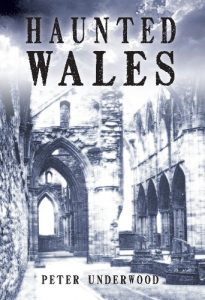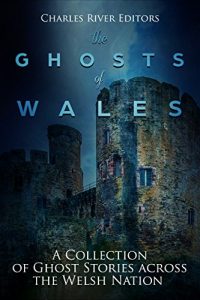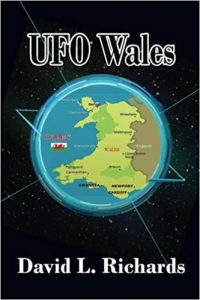Words and images by Greg Mansfield
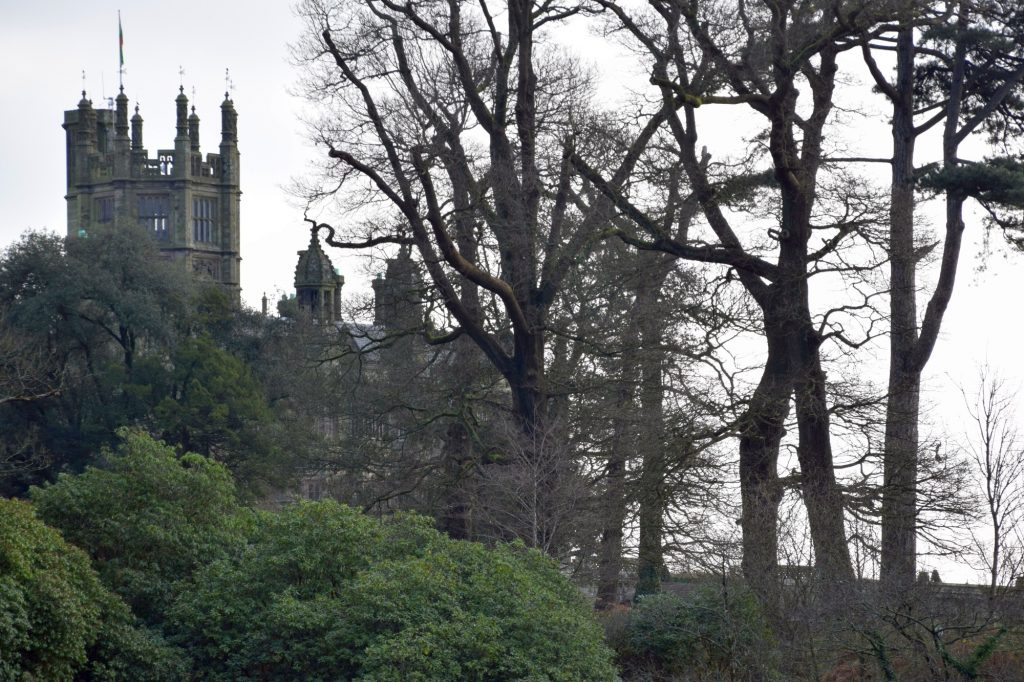
South Wales is a place of lush-green hills and valleys, rugged beaches, and rolling sand dunes. If you’re in search of an ancient land peppered with haunted castles, mysterious ruins, and a UFO hotspot, a visit should be on your bucket list.
Here are my suggestions of the best places to visit when you’re there.
Haunted Places in South Wales
Margam Country Park
Location: 7 kilometers south-east of Port Talbot on the A48
Open: Every day from 10:00am to 6:00pm (last entry 5:00pm)
Admission: Free; pay parking
Website: margamcountrypark.co.uk
Margam Country Park is the vast, former estate of the Mansel Talbot family. It’s currently owned and administered by the local council. With large grassy areas and woods, ponds, streams, and trails, it’s a place of great natural beauty. This makes it a popular place for walking, cycling, mountain biking, deer spotting, and horse riding.
It also has a fascinating history and beguiling atmosphere. And so, despite all the outdoor adventures to be had, it’s the park’s haunted historical buildings — Margam Abbey and Margam Castle — that draw me there time and time again.
Margam Abbey
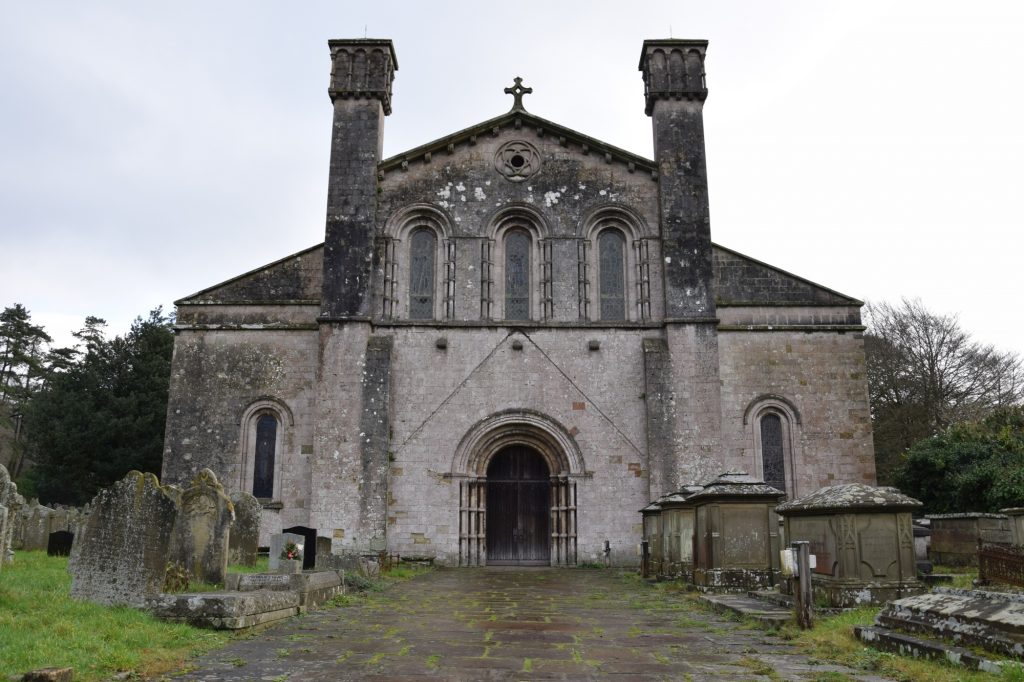
Founded in 1147 by Cistercian monks, Margam Abbey was originally a vast complex of stone buildings. Cistercian monks wore white robes and earned their livelihood through agriculture. From their base at Margam, they farmed and reared sheep for wool production. Their activities extended far across South Wales.
In 1536, the abbey was closed during the dissolution of the monasteries. It and the surrounding 18,000 acres of land were taken over by Sir Rice Mansell. Because the abbey was too large to serve the needs of the small village of Margam, much of it was left to deteriorate.
Today, the abbey church occupies what were once the western bays of the old monastic nave. As for the rest of the ancient abbey, only the outer walls of the chapter house and the crumbling ruin of a cloister remain.
The church, abbey ruins, and surrounding grounds are haunted by a spectral monk.
The late, great ghost hunter and author, Peter Underwood, wrote that the ghostly monk was seen many times in and around the ruins of Margam Abbey in the 1950s. The sightings were usually in the late afternoon or early evening.
During a visit to Margam in 2016, my wife and I chatted with a park guide who told us the monk had been seen more recently in 2005. Apparently, a man walking his dog late one afternoon saw the monk walk out of and through the solid wood door on the south side of the church. As the man stood stupefied, with his dog cowering, the monk walked a short distance and then physically dissolved. The man’s dog was so traumatized by the encounter that it couldn’t be consoled for several days.
In 2010, the cast and crew of the American television program, Ghost Hunters International (GHI), visited Margam to document a paranormal investigation of the abbey and nearby Margam Castle. While investigating near the ruin of the chapter house, they filmed what they claimed was the figure of a monk in a white robe. This was consistent with the ghost’s description.
Two members of the GHI team, including lead investigator, Robb Demarest, went to the top of the hill near the church to do an electronic voice phenomena (EVP) session in the ruin of Capel Mair ar y Bryn (the Chapel of St. Mary on the hill). While there, Robb recorded the voice of a man who ordered him to get out. Robb recently told me that what stood out the most for him from that investigation was when he heard that voice. The moment he recorded and played the EVP was not staged or embellished for the camera. It was truly shocking.
Margam Castle
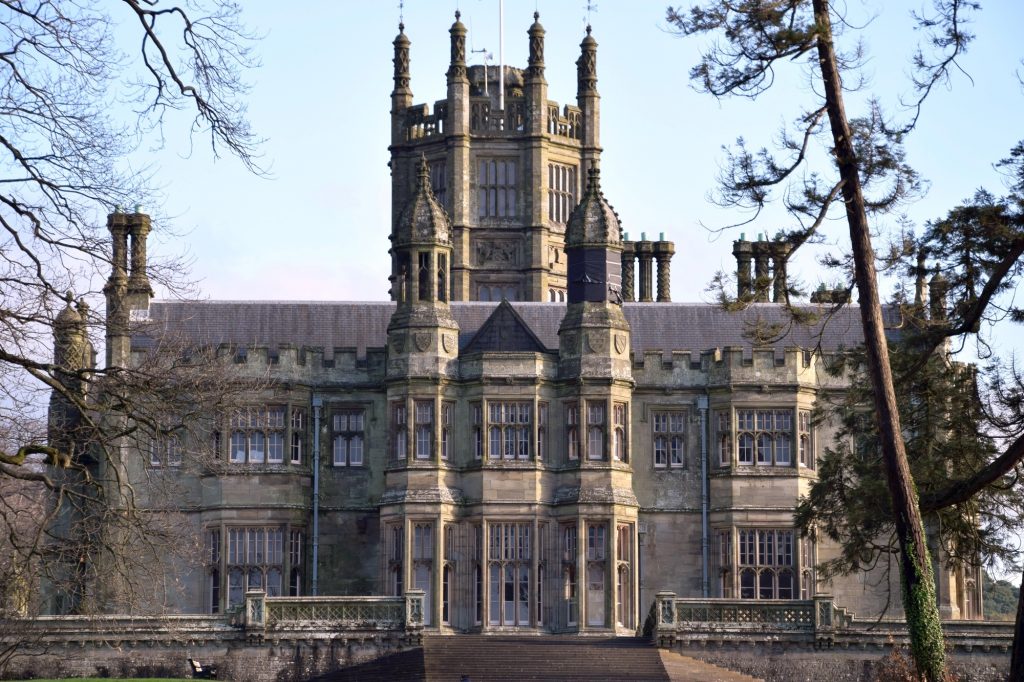
About 200 meters east of Margam Abbey stands Margam Castle. Built between 1830 and 1840 for wealthy industrialist, Christopher Rice Mansel Talbot, the so-called castle is actually a huge country house.
Built in an era when mock castles were popular amongst the super wealthy, Margam Castle was designed and built in the magnificently gloomy Tudor Gothic style.
After Lord Talbot died in 1890 the estate passed to his daughter, Emily Charlotte Talbot. Miss Talbot, as she was known, divided her time between Margam Castle and her house in London. She died of pneumonia at the castle in 1918 and was buried in the Talbot family vault in Margam Abbey.
In the summer months part of the castle’s ground floor is open to visitors, which lets you to gaze in awe upon the long stone-staircase and the tall tower and stunning cupola above it.
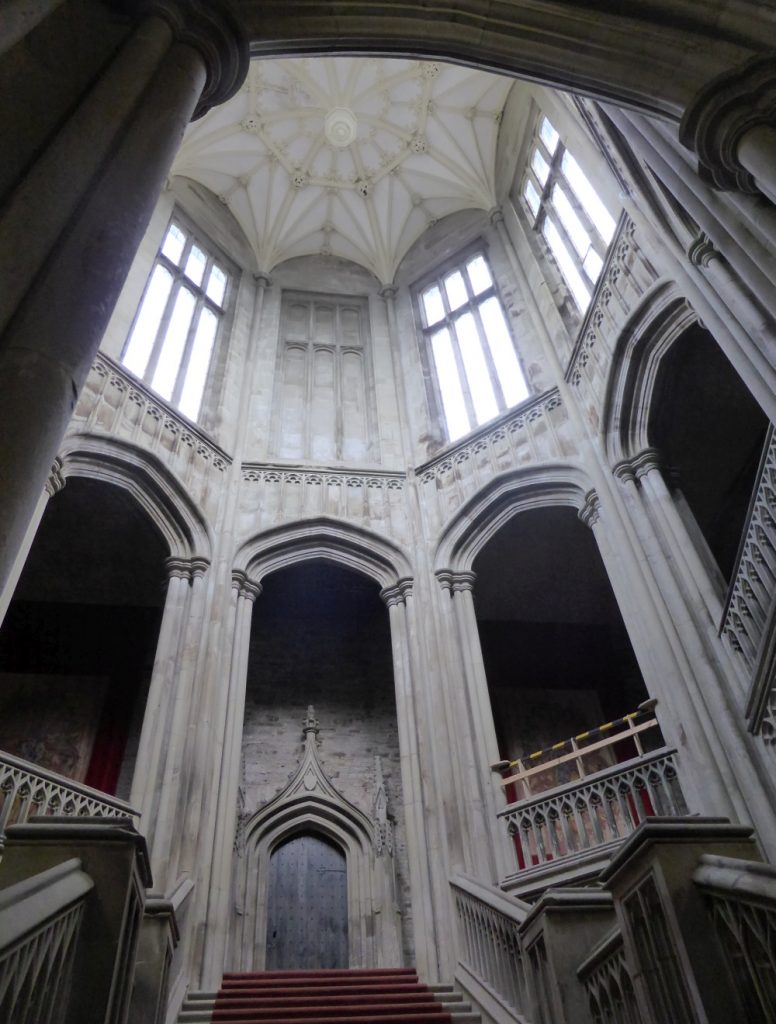
With numerous ghosts, Margam Castle is a classic haunted mansion. Workers and visitors hear footsteps, bangs, knocks, door slams, disembodied voices, groans, growls, and children giggling. Cold spots are felt and strange orbs are seen. Some people are touched and prodded by unseen hands, and some have stones thrown at them.
A White Lady has been seen on the grand staircase inside the house and in the grounds. She’s believed to be the spirit of Miss Talbot. The dark figure of a man that’s sometimes seen in the master bedroom on the upper floor is thought to be Lord Talbot.
Another male spirit seen in the castle and on the grounds is the ghost of Robert Scott, a former gamekeeper. He was shot and killed outside the castle by a deer poacher, Joseph Lewis, in 1898.
The spectre of a tall, burly blacksmith has been seen in the old nursery on the upper floor and in the castle garden. While he’s huge and imposing, he’s known to be a gentle giant.
A group of three or four children haunt the castle. They’re dressed in Victorian-style clothing, run around the upstairs corridors, and have been heard singing Ring a Ring o’ Roses.
Around 2010, a young couple and their infant son participated in a guided tour of Margam Castle. Near the end of the tour, the couple realized their son had gone missing. In a panic, they searched for the boy but couldn’t find him. When he finally appeared, he said he’d been playing chase with some children on the upper floor. This was astonishing, as there were no other children in the tour group or in the castle at the time.
In the 1930s, my great aunt, Brenda Ellis, was head chambermaid at Margam Castle. I’m told she would ask others to walk with her to and from the castle. This is because the route took her past the desolate abbey ruins and along a long, wide footpath where the ghosts were known to roam. She was a strong-willed woman but she was too frightened to make the journey alone.
Ogmore Castle
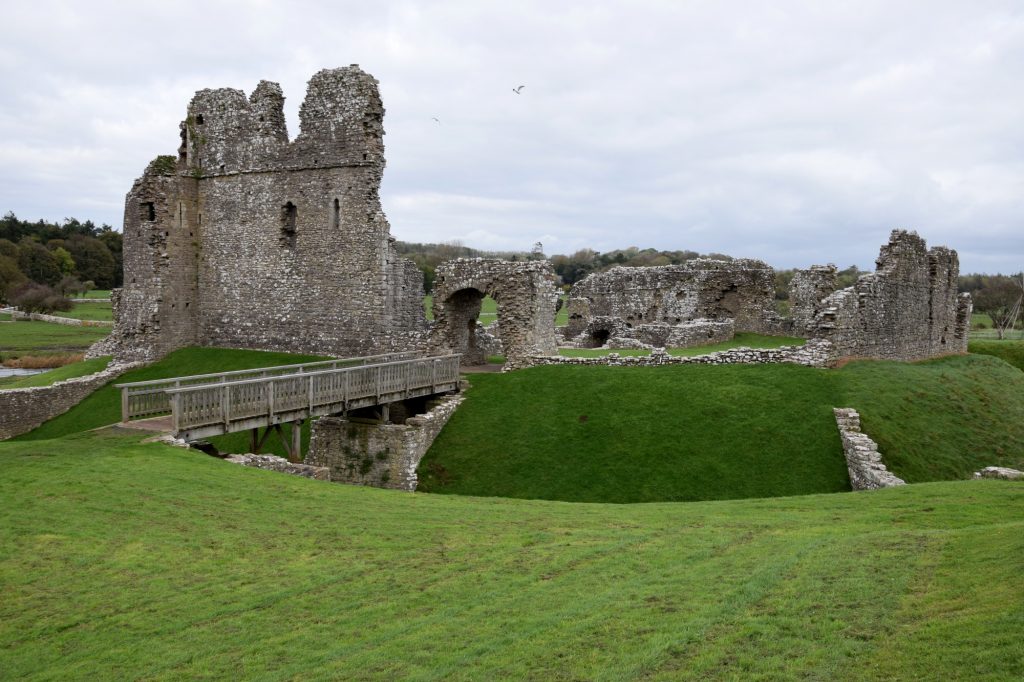
Location: 4 kilometers SW of Bridgend on the B4524
Open: Daily, 10:00am to 4:00pm
Admission: Free
Website: cadw.gov.wales/visit/places-to-visit/ogmore-castle
The picturesque ruins of Ogmore Castle stand beside the shallow Ewenny River, near the town of Ogmore-by-Sea. The first fortification was built there by a Norman knight, William de Londres, around 1105 to guard a ford across the river. It consisted of an earthen motte and timber ringwork, surrounded by a ditch. The castle was unsuccessfully attacked by the Welsh in 1116, and was the only military action the fortification ever saw.
To bolster the castle’s defences, a great stone tower was added around 1126 by Maurice de Londres, William’s son. Now in ruins, the tower originally stood three storeys high and contained a great hall and living quarters. Other buildings were added inside the castle walls in the early 1200s. These included a second great hall with more living quarters, a gatehouse, and a hall block.
A small courthouse and other buildings were added outside the perimeter of the castle in the 1300s. The courthouse served as a centre for justice until 1803. Meanwhile, the Lancasters used the castle as a residence until the 1500s, after which the great tower and other parts of the castle started to crumble.
A lady in white is said to haunt the ruins of Ogmore Castle. While she has been seen in modern times, there are elements of folklore about her.
As the story goes, a man who lived near Ogmore Castle woke in the night to find the White Lady hovering by his bedside. She motioned to him to follow her, which he did, and led him outside to the ruins of the castle. There she told him to lift up a stone, under which he found a cauldron full of gold coins. She instructed him to take half of the treasure for himself and put the stone back in place. He filled his pockets with half the coins and replaced the stone over the cauldron. When he looked up the lady was gone.
Time passed, and even though he had enough money to live comfortably for the rest of his life he kept thinking about the rest of the treasure. One night he gave into temptation and returned to the castle. As he prepared to steal away with the rest of the loot, he looked up and saw the White Lady standing above him, shaking her head as she glared at him.
“Foolish man!” she cried. “You have all you could ever need, and yet you still want more. From this night forth your fortunes shall be reversed.” She then attacked him, slashing him with her long fingernails. Bloodied and bruised, the man put the coins back in the cauldron and staggered home. A few weeks later, he fell ill and died. On his deathbed, he revealed how he’d become rich but wouldn’t say where exactly the remaining treasure was hidden.
Some believe the White Lady is the spirit of Maurice de Londres’ daughter. But while he had a son, Thomas de London, it’s not known whether he actually had a daughter. She might actually be the ghost of Maurice’s wife, Mabel, or his daughter-in-law, Eve.
Despite the cautionary tale and the question of who the White Lady is, the ghost is actually seen from time-to-time. She appears in the castle grounds and surrounding area. In the early 2000s, a local man claimed to have nearly run into her as he drove his car along the road next to the castle.
If when you visit Ogmore Castle the river isn’t running too high, be sure to cross the stream using the stepping stones. Then look back across the river to the castle ruins, and take a moment to imagine where the fabled gold might be buried amongst its crumbled walls.
Prince of Wales Inn
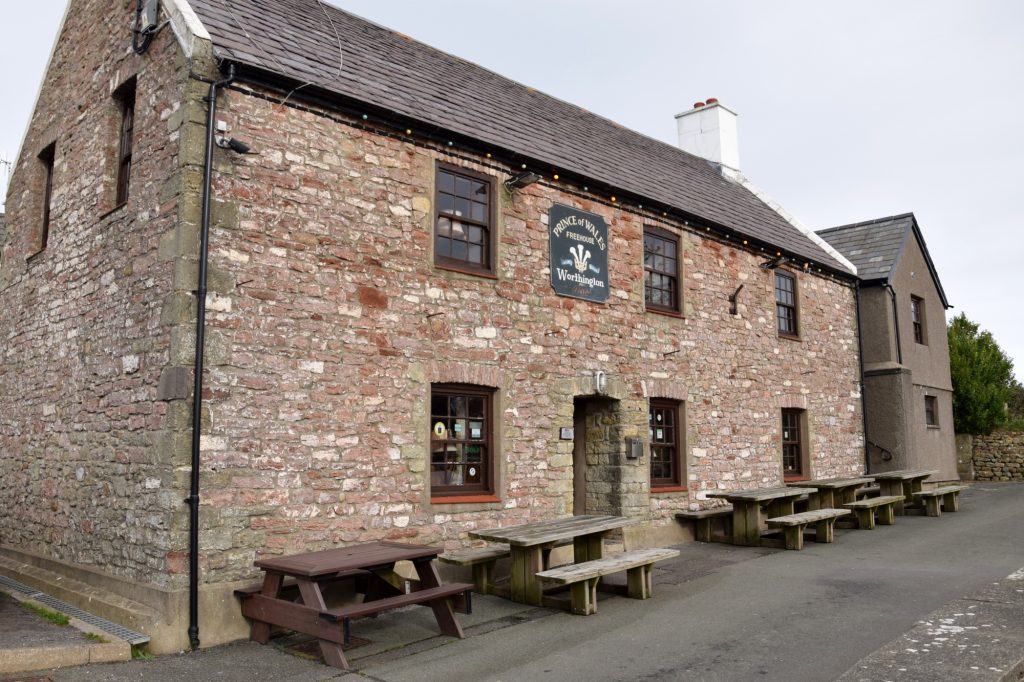
Location: 8 minutes SW of M4 junction 38
Open: Daily, 12:00 noon to 11:00pm
Admission: Free; table bookings required for food service.
Website: www.princeofwalesinn.co.uk
Overlooking Kenfig Pool and the Kenfig sand dunes, the Prince of Wales Inn is steeped in history and riddled with ghosts.
The medieval town of Kenfig was buried by the shifting sands, and records indicate that it was fully abandoned by 1339. The inhabitants migrated up the hill to the east, where Kenfig village now stands.
The Prince of Wales Inn is on the site of a guild hall, which was built in the 1400s to replace the one lost to the sands in the old town.
The current building was built in 1808, with the inn located on the ground floor. The upper floor contains a large, open room with a vaulted ceiling. It served as a courthouse in the 1800s, where criminal trials and civil matters were decided. Some people were sentenced to death there, and were subsequently executed outside on gallows that stood by a stone wall in the adjacent yard.
Sometimes the upper floor served as a makeshift mortuary for shipwreck victims who washed up on nearby Sker Beach. And from the late 1800s to the early 2000s, it hosted Sunday school. Today, the upstairs room serves as Kenfig’s town hall.
In the 1980s, the Prince of Wales Inn gained notoriety for being haunted by strange noises. In 1982, the inn’s landlord said that he’d heard organ music being played in the pub after closing time, along with the sounds of glasses clinking and voices talking in an old Welsh dialect. When he went to investigate, the pub was empty and quiet. The organ music was especially strange as there was no such instrument in the building.
I was privileged to meet the inn’s former landlord, Gareth Maund, in 2014. He told me that he and his employees had many encounters with ghosts in and around the pub.
Bar staff say that the back kitchen is haunted. Some are touched by unseen hands while working. Others hear a voice that calls out to them. When they look to see who it is, there’s no one there. Also, a staff member once saw a jug shoot across the kitchen.
Even Gareth’s two dogs seemed to witness the ghosts. They would sometimes turn their heads in unison while in the bar, as if watching something moving when there was nothing there.
The ghost of a little old lady, dressed in clothing from the 1940s, has been seen and spoken to by many patrons in the toilets.
Much of the paranormal activity takes place in the hall above the pub. Unexplained footsteps are heard on the wooden floorboards. Some people claim that they’ve had their faces stroked and ears pulled while standing by the door to the room.
The apparition of a boy of about 9 or 10 years old is sometimes seen sitting in the southeast corner of the hall. It’s believed he was run over and killed by a coach and horses on the road by the pub in the 1800s. His spirit gravitated towards the building and has stayed ever since.
Another ghost in the hall is known by its ghastly odour. Gareth referred to this entity as the smelly ghost; he could always tell it was around because it smelled like rotten fish.
One evening, Gareth heard a voice say “Good night, Jack” to him from across the car park, near where the gate to the gallows yard once was. When he looked to see who it was, there was nobody there. He believed it was a ghost who mistook him for a former landlord named Jack David.
Castell Coch
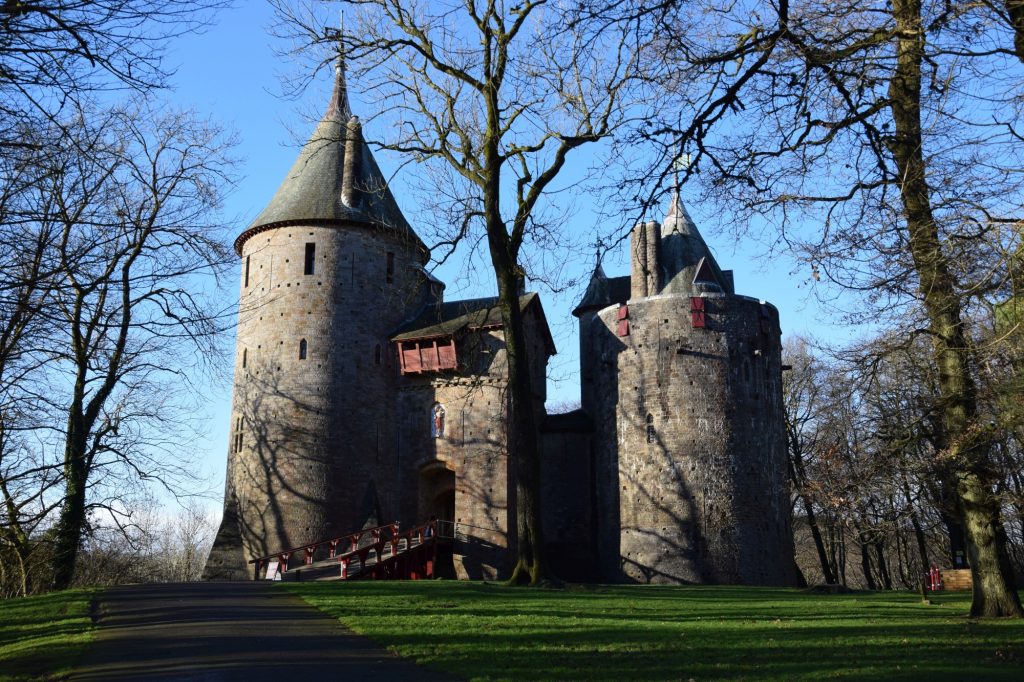
Location: Off the A470 at Tongwynlais, 8 kms north-west of Cardiff
Open: All reasonable times
Admission: Some charge, with free parking
Website: https://cadw.gov.wales/visit/places-to-visit/castell-coch
At first glance, you’d think that Castell Coch is one of the most magnificently preserved fortresses to have survived from the middle ages. While its foundations date back to the 11th century, the castle is actually a reconstruction from the 1800s.
The first castle on the site was built by the Normans after 1081 to protect the newly conquered town of Cardiff and control the route along the nearby Taff Gorge. First known as Castrum Rubeum, Latin for “Red Castle,” and later in Welsh as Castell Coch, it was probably named after the colour of its sandstone walls.
The original Castell Coch was probably destroyed by Welsh rebels in July 1314, after which the site was completely abandoned.
In 1760, the castle ruins were acquired by John Stuart, 3rd Earl of Bute, as part of a marriage settlement. John Crichton-Stuart, the 3rd Marquess of Bute, inherited the castle in 1848. One of Britain’s wealthiest men, The Marquess hired the architect William Burges to reconstruct the castle, “as a country residence for occasional occupation in the summer.” Burges used the medieval remains as a basis for his design.
While the exterior is a reasonably faithful reproduction of the original castle, its interior is decorated in Victorian Gothic fairy-tale style. Many of the castle’s rooms, including a feasting hall, drawing room, and several bedrooms, are opulently decorated with intricate woodwork, wood carvings, gold leaf, and bespoke murals. No expenses were spared in their creation.
The Marquess of Bute died in 1901, leaving the property to his wife. In 1950, his grandson, the 5th Marquess of Bute, placed it in the care of the state. It’s now controlled by the Welsh heritage agency, Cadw.
Its best-known ghost is of a Royalist Cavalier from the Civil War era. He was first seen in the late 1890s, when a female caretaker who was asleep in one of the bedrooms was woken by a strange tapping noise. As she sat up and looked around, she saw a man dressed in a Cavalier’s uniform standing by her bed. He was pale faced and looked very sad. When she made a motion to get out of bed, he moved toward a door in a corner of the room and disappeared.
After that night, the caretaker saw the Cavalier wandering around the castle and outside in the grounds at various times. He’s been seen in and around the castle ever since.
Castell Coch is also haunted by a White Lady, who is believed to be the ghost of Dame Griffiths. A former inhabitant of the castle, she died from a broken heart when her young son accidentally drowned in a nearby lake. Over the years, many people claim to have seen her wraith roaming around the building and in the surrounding woods. It’s said that after her husband’s death, Lady Bute stopped coming to Castell Coch for fear of seeing this ghost.
In 2007, a man saw a woman dressed in old fashioned, faded white clothes at the edge of the woods by the castle. At first, he thought she was a member of a local historical re-enactment group. When he realized the woman was floating above the ground, however, he knew he was witnessing something supernatural.
Caerphilly Castle
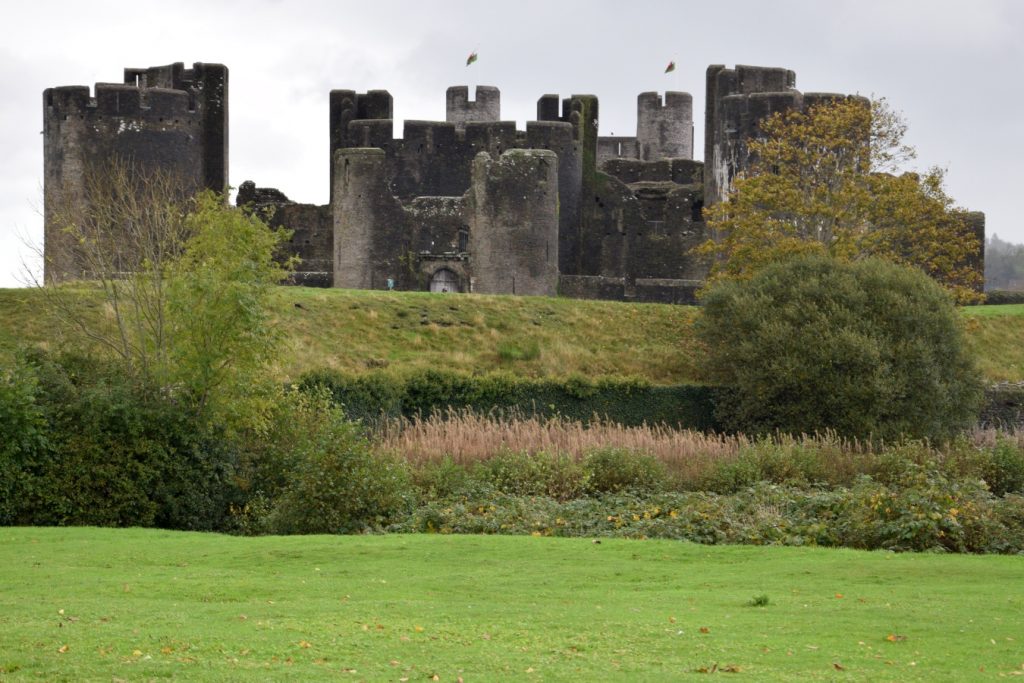
Location: Caerphilly town centre
Open: All reasonable times
Admission: Some charge
Website: cadw.gov.wales/visit/places-to-visit/caerphilly-castle
Located in the centre of a modern town, Caerphilly Castle is situated on the site of a Roman fort that dates back to 75 AD.
Of the many medieval castles I’ve visited, this fortress is one of my favourites. This is because it’s largely intact and features an imposing gatehouse, wide watery moats, a fabulous great hall, a distinctive leaning tower, and defensive rings that are set one inside the other. It was the first castle in Britain to have such an ingenious, concentric-defence system.
Construction of the castle was started by the Norman lord, Gilbert de Clare, in 1270. Soon after, in 1271, it was seized and destroyed by the Welsh prince, Llewelyn ap Gruffydd. After quickly recapturing the site, however, de Clare restarted construction.
Building of the castle continued until de Clare’s death in 1295. It’s thought that his son, another Gilbert de Clare, completed most of the construction before his own demise at the battle of Bannockburn in 1314.
After his death, the castle passed to his sister, Eleanor, and her husband, Hugh le Despenser the younger. Despenser built the great hall in 1322, but he didn’t enjoy dominion over the castle for long. Because of his allegiance to the ill-fated King Edward II, he was beheaded in 1326.
The castle began falling into disrepair in the late 1300s, and was restored in the early 1900s by the Marquess of Bute.
Caerphilly Castle’s best-known ghost is the Green Lady, who’s been seen in various places, including the great hall and outer ramparts. Some believe she’s the spirit of the first Gilbert de Clare’s wife, Alice de la Marche.
Ghostly soldiers have also been seen on the castle ramparts, keeping watch. And an unknown figure dressed in red haunts the castle grounds.
Caerphilly Castle has a connection to an evil entity known in Welsh as the Gwrach y Rhibyn (Hag of the Mist). This wraith was supposedly seen outside the castle in the 1700s. She apparently rose from the waters of the moat with “droplets falling from her wings, talons and long hair,” drifted towards the castle, and disappeared among its ruins. Some say she can sometimes be heard wailing near the castle on dark, misty nights. But I, for one, suspect she’s more fantasy than actual phantom.
UFO Hotspot in South Wales
MOD St Athan
Location: Near the village of St Athan
Open: Closed to the public
Admission: N/A
Website: raf.mod.uk/our-organisation/stations/mod-st-athan/
Ministry of Defence (MOD) St Athan is an air base near the village of St Athan in the Vale of Glamorgan. It officially opened as RAF St Athan in September 1938.
During World War II the station had over 14,000 personnel, and was used for training air and ground crew.
The base has been home to the Royal Air Force No. 4 School of Technical Training since its inception, as well as a major aircraft maintenance unit. At various times it has also housed British Army units.
While the British government doesn’t openly declare it, it’s believed that MOD St Athan has, at various times, stored part of Great Britain’s nuclear arsenal. As UFOs are often seen near military installations where nuclear weapons are kept, it’s likely for this reason the base and surrounding area is a hotspot.
In May 1977, when I visited South Wales as a boy, a few family members and I witnessed three unidentifiable objects hovering over a farm field about four kilometres north-northeast of MOD St Athan. As my uncle drove my mother, aunt, and me westbound on the A48 out of Cardiff, I noticed the objects out of my passenger window.
The inexplicable objects were ovoid, similar in shape to the ‘Tic-Tac’ UFOs reported by US Navy fighter pilots in 2004. They were silver in colour and as they hung in the sky about 300 metres above the ground, each one bobbed up and down. I pointed the objects out to everyone in the car. We all saw them but couldn’t say what they were.
At first I speculated the objects were weather balloons. But their apparently solid forms and vertical bouncing didn’t match balloons. And after we had passed trees at the side of the road that blocked our view of the objects for a few seconds, they had all disappeared.
I thought little about that sighting over the years. Then, in 2008, I was reminded of it when I heard about the UFO spotted by a police helicopter at MOD St Athan. In that case, a helicopter landing at the base was buzzed by an unidentified aerial object. In the official version of the story, the helicopter landed without incident.
According to another, lesser known account of the incident the pilot abandoned his landing and chased the object out over the Bristol Channel. When the helicopter caught up with the object it flew off at supersonic speed. And a day after the pilot and crew landed back at the base and told the press about their encounter, their superiors told them to retract the story and never speak with the press about it again.
Some years later, in 2016, another strange incident was reported by residents in Pentyrch. The village of Pentyrch is located on the western outskirts of Cardiff, about 24 kilometres from St Athan. Multiple witnesses reported seeing a huge pyramid-shaped object in the night sky along with several coloured orbs that emerged from it.
According to Pentyrch witnesses, four military planes arrived on scene. Two flew in from the direction of MOD St Athan and two from the direction of Cardiff. Also, a formation of Apache helicopters approached from the south. When the large object moved to the north-west, the military planes chased it. Some claimed this was followed by audible explosions, and the next day some sort of wreckage was taken away by the military.
When you visit South Wales remember you’re close to MOD St Athan, and keep your eyes on the sky!

